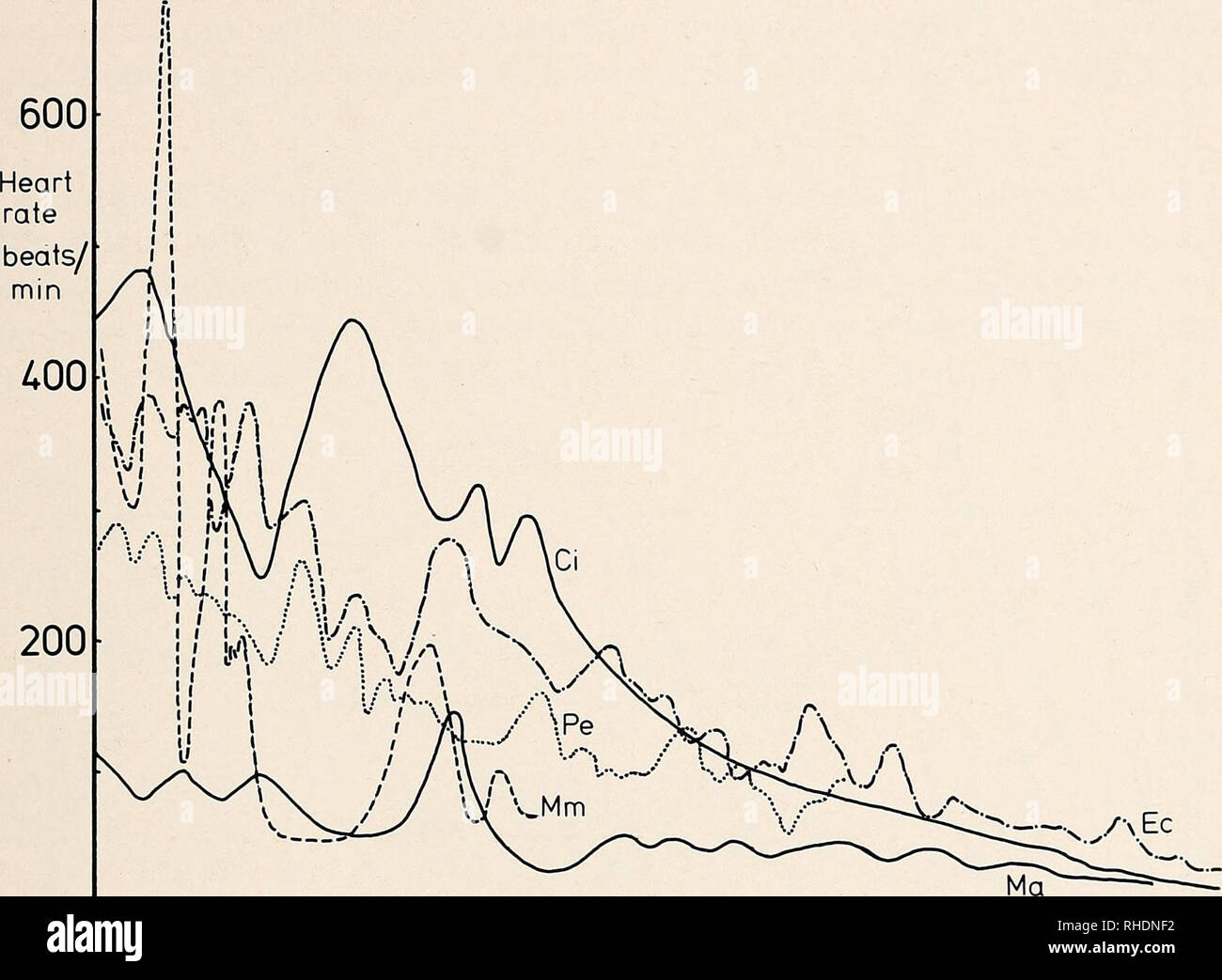. Bonner zoologische Monographien. Zoology. 17. 0 12 3 4 5 hours 6 Fig. 9: Heart rate during entrance into torpor. Ma = Marmota monax, hibern., Ta5° C (Lyman 1958), Ci = Citellus tridecemlineatus, hibern., Ta 5° C (Lyman and O'Brien 1960), Pe = Perognathus hispidus, daily torpor, Ta 11° C (Wang and Hud- son 1970), Ec = Echinops teliahi, daily torpor, Ta 20° C (Scholl 1974), Mm = Myotis myotis, hibern., Ta 10° C (Kulzer 1967). result of sympathetic (regulative) influences. In an extreme case during cold stress in hibernation, a negative correlation between Tb and heart rate may emerge (Davis 19

Image details
Contributor:
Library Book Collection / Alamy Stock PhotoImage ID:
RHDNF2File size:
7.2 MB (236.8 KB Compressed download)Releases:
Model - no | Property - noDo I need a release?Dimensions:
1846 x 1354 px | 31.3 x 22.9 cm | 12.3 x 9 inches | 150dpiMore information:
This image is a public domain image, which means either that copyright has expired in the image or the copyright holder has waived their copyright. Alamy charges you a fee for access to the high resolution copy of the image.
This image could have imperfections as it’s either historical or reportage.
. Bonner zoologische Monographien. Zoology. 17. 0 12 3 4 5 hours 6 Fig. 9: Heart rate during entrance into torpor. Ma = Marmota monax, hibern., Ta5° C (Lyman 1958), Ci = Citellus tridecemlineatus, hibern., Ta 5° C (Lyman and O'Brien 1960), Pe = Perognathus hispidus, daily torpor, Ta 11° C (Wang and Hud- son 1970), Ec = Echinops teliahi, daily torpor, Ta 20° C (Scholl 1974), Mm = Myotis myotis, hibern., Ta 10° C (Kulzer 1967). result of sympathetic (regulative) influences. In an extreme case during cold stress in hibernation, a negative correlation between Tb and heart rate may emerge (Davis 1970, Kayser 1961). Thus a reflex acceleration of heart rate during hibernation is possible (Armour et al. 1974, Kristoffersson and Soivio 1964, Lyman 1965). The isolated heart of Citellus reacts to adrenaline even at a Ti of 4° C with a very strong positive inotropic effect (Turpayev 1948). Arousal from hibernation and from daily lethargy leads to a powerful sympathetic activation of the heart (Lyman 1965, Morhardt 1970), so that at first cardiac output and later heart rate increase (Kirkebö 1968). In spe- cies with very small body weight, extremly high heart rates were recorded (Bullard 1964, Kulzer 1967, Lasiewski et al. 1967, Rauch 1973). Microanatomy of the heart: It is possible that some special properties of the hibernating heart depend on special structures within the cells. Such differences — in comparison to normothermic conditions — may result in a tighter integration at the structural level, by storage of granules and by an enlargement of the Golgi apparatus (Poche 1959, Rosenqvist 1970). This. Please note that these images are extracted from scanned page images that may have been digitally enhanced for readability - coloration and appearance of these illustrations may not perfectly resemble the original work.. Bonn, Zoologisches Forschungsinstitut und Museum Alexander Koenig